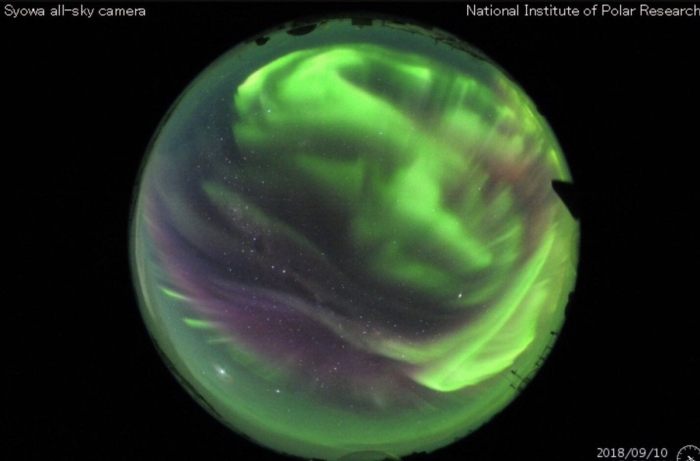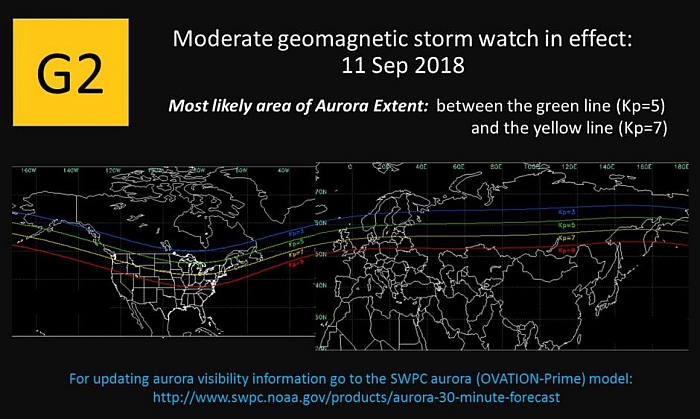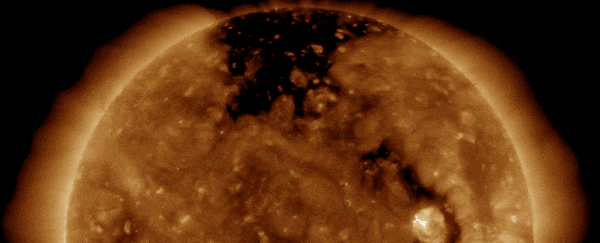Aurora chasers, get your cameras ready. A huge hole has opened in the Sun's corona, which means we're officially on geomagnetic storm watch - with auroras incoming across a huge swathe of North America.
The National Oceanic and Atmospheric Administration (NOAA) has issued a storm watch for a G2-level solar storm on September 11. That's a moderate storm on the 5-level scale, with G5 being the highest.
We're currently heading into Solar minimum, the least active period of the Sun's 11-year cycle. That means much lower sunspot, coronal mass ejection and solar flare activity.
But "holes" can still open in the Sun's corona. These are cooler, less dense regions of plasma in the Sun's atmosphere, with more open magnetic fields. These open regions allow the solar winds to escape more easily, blowing electromagnetic radiation into space at high speeds.
 (National Institute of Polar Research)
(National Institute of Polar Research)
If the hole is facing Earth, those winds come right at us. According to the British Met Office, we're looking at speeds of up to 600 kilometres per second in the next day or two.
While the effects of this wind will be slightly stronger than those of a G1 storm, they'll probably pass most of us by. High-latitude power systems may experience voltage alarms due to surges from geomagnetically induced currents, and longer storms can cause transformer damage, but it looks like this storm will be a relatively short one.
Spacecraft operations may be affected as the storm impedes GPS, which means corrections may need to be issued by ground control. And high-frequency radio propagation can fade at high latitudes.
The biggest effect will probably be the light show, since the solar winds are responsible for auroras. As they blow in from space, they interact with charged particles (mainly protons and electrons) in our magnetosphere.
These charged particles then rain into the ionosphere and travel along the planet's magnetic field lines to the poles, where interactions with other particles, such as oxygen and nitrogen, manifest as dancing lights in the sky.
 (NOAA)
(NOAA)
According to a map released by NOAA, these will likely be visible from Alaska, as well as the states across the US's North, as far south as Iowa and Illinois. There will also be aurora australis visible from Antarctica.
So if you're in the latitudes that are going to be affected, get ready for a treat. The weather is warm and the skies are clear - it doesn't get much better for aurora viewing than that.
If you want to get super prepared, you can check out the NOAA's three-day aurora forecast here.
